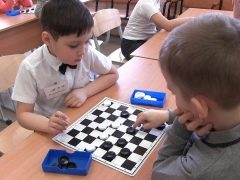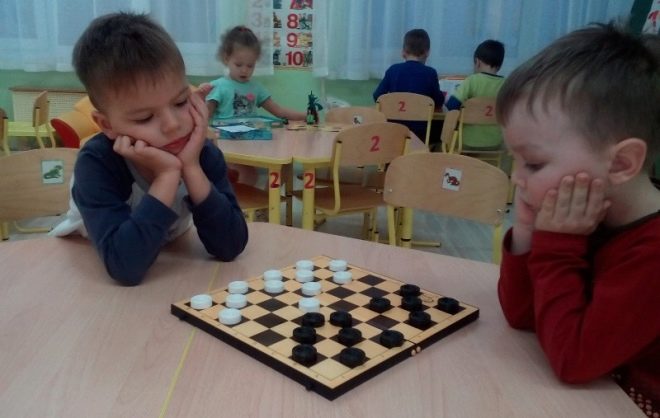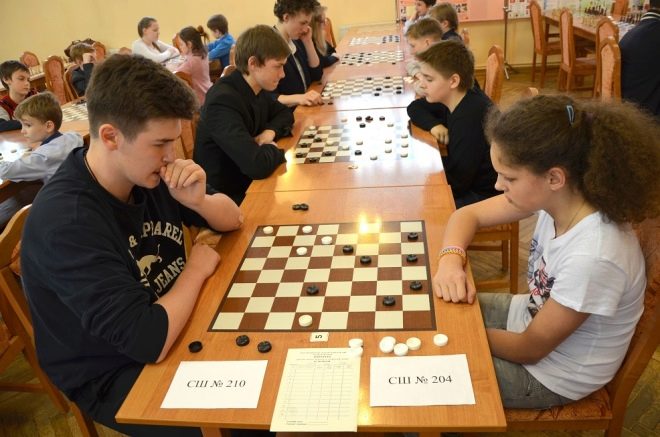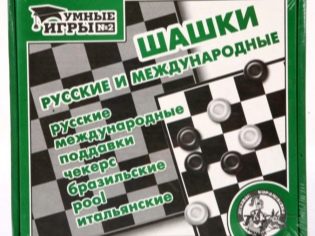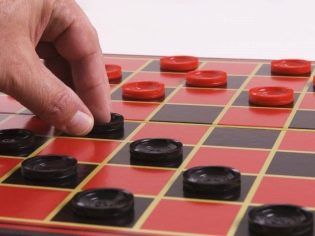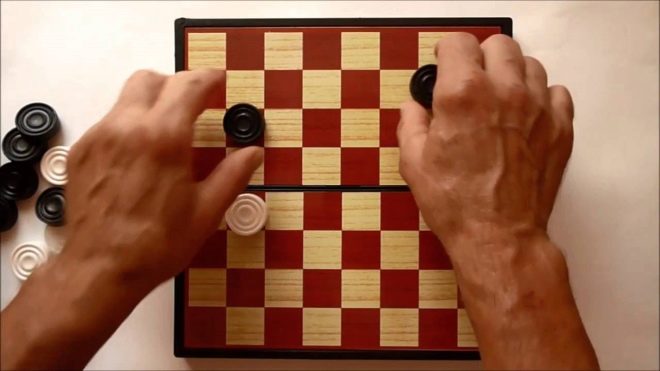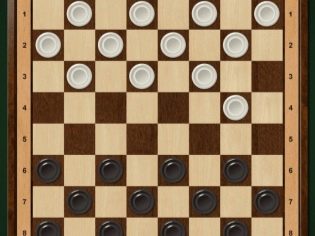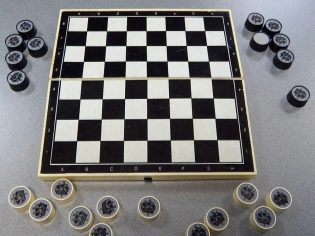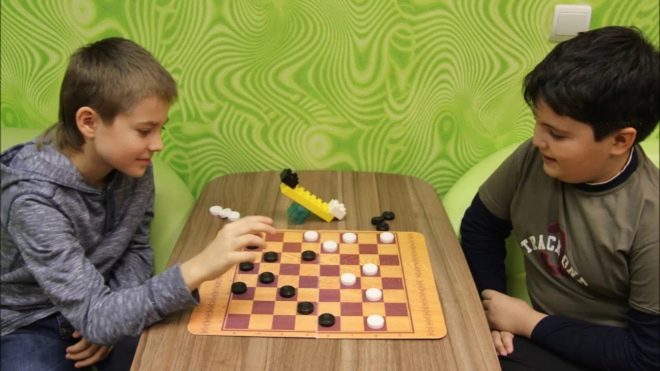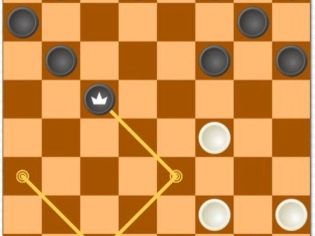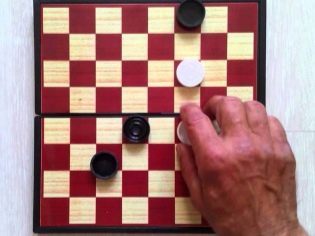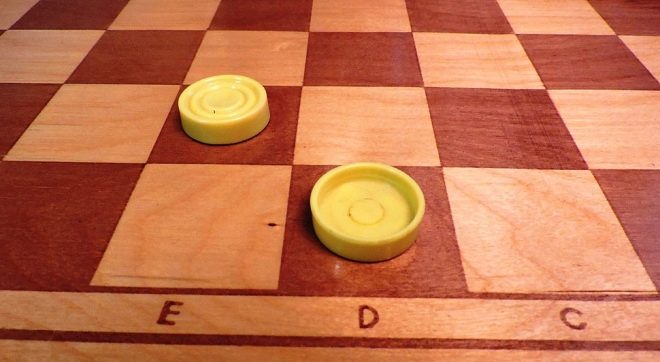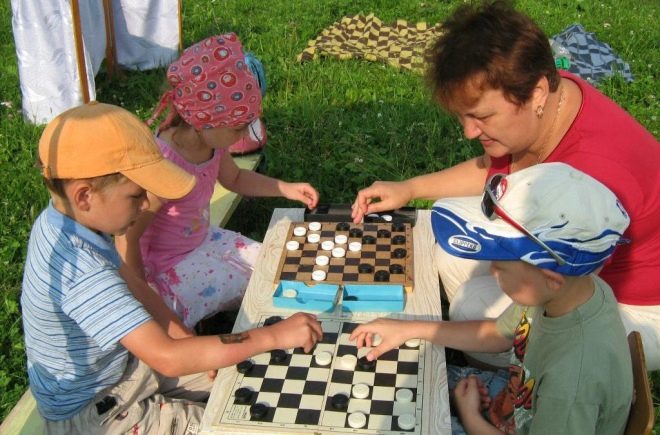Checkers: rules of the game for beginners children and tips on teaching adults
Games, including board games, are perceived by many adults as an activity that you should not waste your time, because you can have fun, supposedly and more interesting. However, it should be borne in mind that most classic board games depend not only and not so much on luck, but on the ability to play them. The task of the player is either to outsmart the opponent, or to surpass him in mindfulness and the ability to build a strategy, and therefore, the fascination with such a pastime perfectly coaches these skills.
Checkers is one of the most widely known board games, and children's psychologists insist that it is worthwhile to teach a child the basic rules in early childhood.
Why do children need it?
At the age of five, the middle child begins to see the relationship between his actions and the subsequent development of the situation, so it is at this stage that he is for the first time able to build a certain strategy. Child development specialists insist that this new ability should be developed as soon as possible, and one of the best ways to do this is to teach the kid the rules of the game of checkers.
The gameplay in this case makes you think, because only a fairly intelligent and attentive person can win. At the same time, the competitive component of the game forces the child to return to the task again and again in order to achieve success. Of course, the little novice will constantly lose against a serious rival, which is not very interesting, but you can find rivals among peers - then the chances of success will be higher.
Regularly playing checkers, such a preschooler acquires, at a minimum, the ability to concentrate on solving some problem (which is unnatural for most children) and perseverance. These qualities are very useful for schooling - the child is more likely to make some progress right away. Moreover, to win it is necessary to be able to think through a strategy a few moves ahead, which is useful at any stage of life. In drafts, the kid also learns that you need to make decisions yourself, and some of them may be wrong - then you need to be able to accept the consequences of your own mistakes.
If one of the parents has a rough idea of the game, it will be a good evening leisure, helping to strengthen the family atmosphere. If the parents do not have such skills, and they don’t have the time, it’s wiser to send the child to a specialized circle where the kid will be trained by professionals.
Game accessories
It should be noted that the rules of the game of checkers have several variations, named after the country in which they appeared - for example, English, Turkish, Italian. All this is likely to be taught in special circles, but first you should learn ordinary Russian checkers, accessories for which you can buy at any toy store.
The set, familiar to our country, looks pretty simple. The game board (and at the same time, as a rule, the box for the whole game) is a wooden or plastic field, folded in half in the form of a suitcase, although it can even be depicted on cardboard. This field is a complete analogy of the chess - it is divided into eight rows in length and width, the cells are painted in white and black through one.Checkers are the playing chips - the same figures, of which there must be 12 pieces of black and white in the set.
An important condition is the possibility of a stable position of the checkers upside down., and visually the difference between a correctly installed checker and an inverted one should be obvious.
Today, to satisfy children's desires, the whole gaming industry is working, because classic checkers are somewhat losing to competitors in terms of color design. With a great desire, you can find a checkered set, designed specifically for kids - as the first such gift for home schooling, such a solution will have a slightly higher chance of getting the child interested.
Rules for beginners
That checkers recommend as the first intellectual game because there are no difficult to understand rules. In general, it is not difficult to remember them, although for a five-year-old child this can be a definite problem - if that happens, do not be lazy to find special rhymes on the Internet with which children can quickly remember the basic rules.
It should be noted that people who have never seriously taken a great interest in drafts can only think that they know all the rules, while some of the points turn out to be a surprise for them. Consider all the principles of the game tezisno:
- At the beginning of the game, the checkers are displayed in three rows on their side of the board, occupying only black cells, and they can also walk exclusively on black, that is, only diagonally;
- checkers always go only forward, the end of the turn must be on the nearest free cell;
- at home, this rule is often forgotten, but the player does not have the right to change his mind - even a simple touch of the figure means that he must now resemble it;
- rivals take turns;
- To win, you need to kill all the opponent's checkers one by one - for this you need to have the enemy figure standing right in front of yours, and right behind it there is an empty field;
- you cannot walk back, but you can kill the opponent’s checkers in any direction;
- moreover, the figures walk only one cell forward, whereas you can kill several enemy checkers at once in one move, if they are located through one - you can even change the direction of movement in the process;
- another rule that is often ignored: if the opponent has been framed, the player has no right to refuse to beat him;
- a checker that has reached the opposite edge of the board turns into a "lady" - such a figure no longer has any restrictions on the direction of movement or even the length of the turn, although it is still limited to only black diagonals;
- kill the "lady" can any ordinary piece;
- In some cases, a draw is possible if there are too few pieces left in the game, and the opponents are about equal (otherwise the game may take too long), or if the surviving pieces of the opponents blocked each other in such a way that there are no available moves.
In some varieties of the game, other special rules are possible, but for the baby so far this simplest version is enough.
Terms and time limits of the party
If you want your child to not only sometimes play in his spare time, but deal with drafts relatively seriously, you should immediately teach him to use at least the basic terms. If everything is clear with a simple checker, then the board is the one that is on the right or left edge of the field, and the checkpoint is the one that after the next turn will turn into a “lady”.
The “lady”, as we have said, is the figure that reached the opposite end of the board from the player, and the eighth row itself, which turns the sword into a “lady”, is called the ladies field. A well-thought combination of moves, the result of which will be the transformation of simple checkers into a "queen", is called quite logical - a breakthrough.
If the figure, like, beats no one, this is called a quiet move, but you need to strive to make shock moves - when the figure beats the opponent.A move in which one's own simple checker is deliberately substituted for the opponent’s blow is called sacrifice. Swap is called a move (more precisely, one move from each of the rivals), as a result of which both have the same number of pieces lost.
If the simple checkers of one player are blocked by the checkers of another so that they can neither walk nor beat the opponent, this is called locking. When a similar situation occurred with the participation of “ladies”, who, standing at opposite ends of the diagonals, do not allow the opponent’s similar figure to leave their corner without sacrifice, the position on the board is called “tetanus”. Finally, the position of the checkers after one with free fields is usually called a sieve.
Tips for teaching nonprofessionals
Teaching a child to play from scratch is not so easy - you have to tell him absolutely everything, even what adults are used to consider obvious. The problem also lies in the fact that the baby must remember all this at once, and this is hard and not always interesting. Therefore, do not rush to throw out all the information at once - for the first time it will be enough and just place the checkers on the board. If you can, always add a little imagination - let knights fight instead of faceless drafts on the field.
In the first installment, it is often advised to use eight checkers instead of twelve - so there will be more free space, you do not need to immediately get involved in a fight. Explain each move, your task now is not to win, but to fix the rules. It’s inappropriate to smash a novice, or it’s inappropriate to tease him now, but you don’t need to succumb to losing the game completely - this will not help mental development, but defeat would be an excellent stimulus for self-improvement. However, sometimes it is useful to succumb a little to leveling up the forces, because no one wants to constantly lose without the slightest hope of success.
Pay attention to the baby that it is desirable to think through not only the nearest move, but also the whole combination in advance. Be prepared that the preschooler does not immediately master the game - he will be wrong, but you need not to scold him at such moments, but to explain what's what. But for successful actions you need to praise every time.
Remember that for a child’s mind such a game is at first rather tedious, so even in an interesting game, take rest breaks.
See the next video for checkers rules for beginners.
